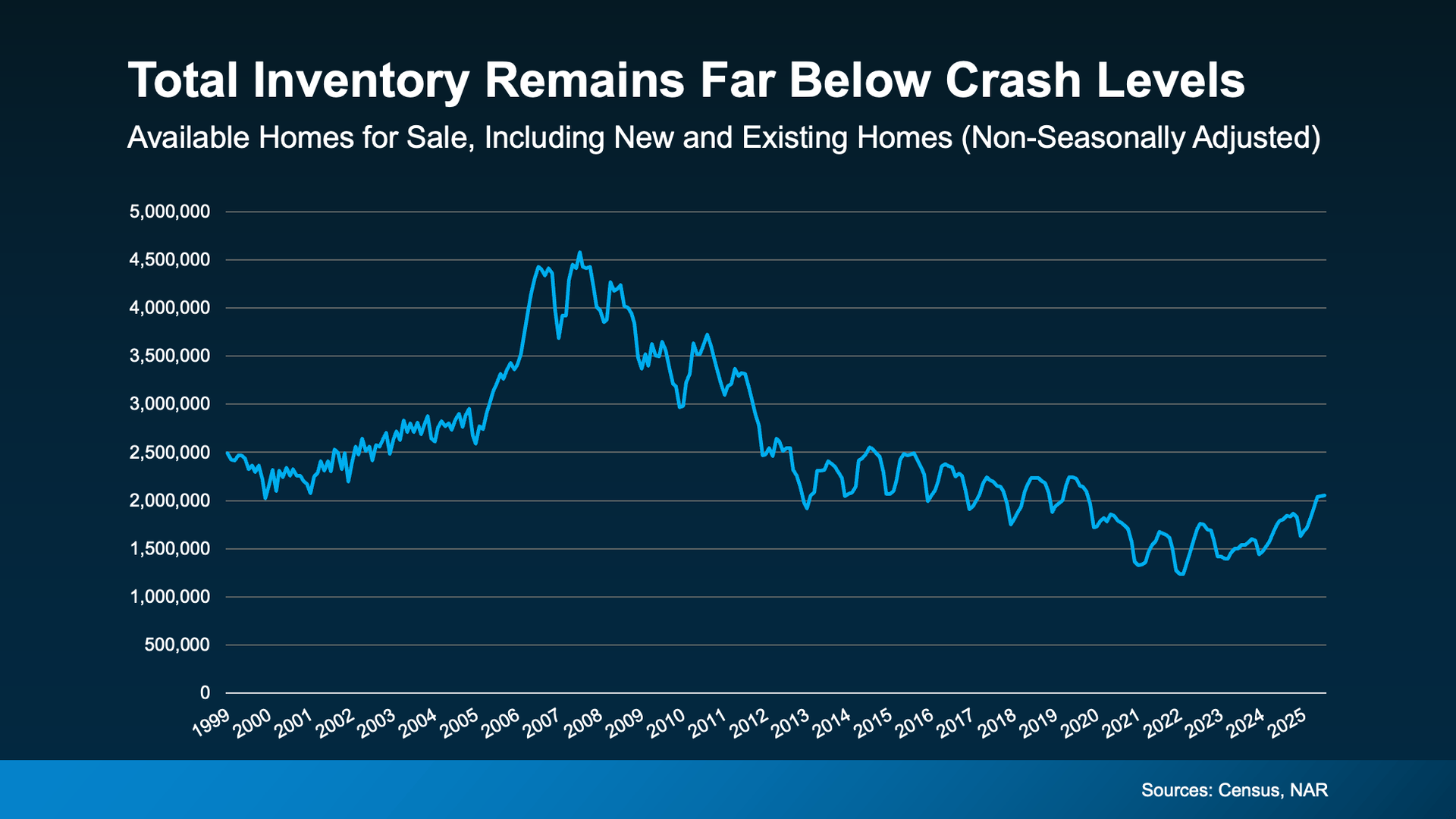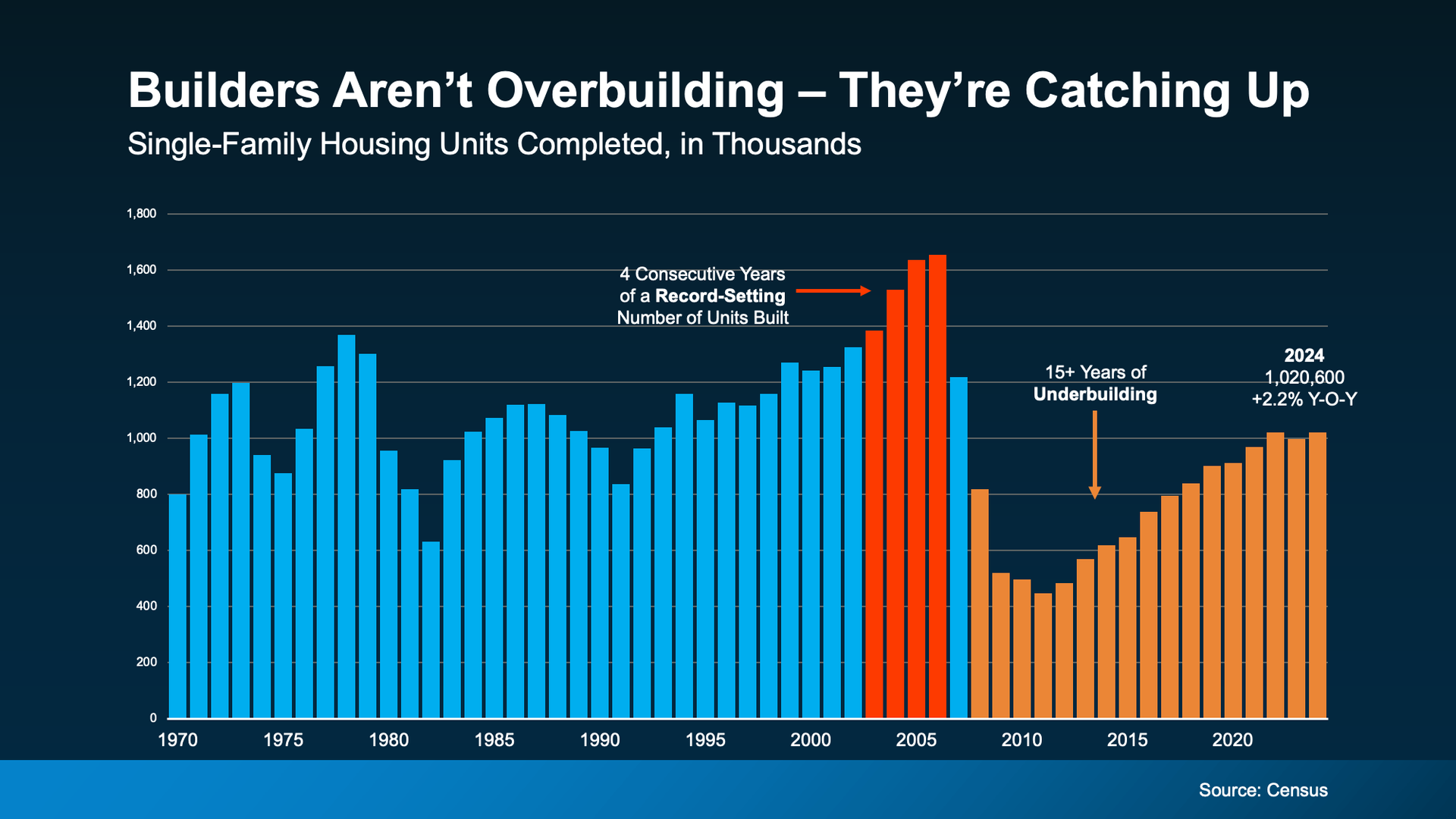Why Today’s Housing Market Isn’t a Repeat of 2008
Why Today’s Housing Market Isn’t a Repeat of 2008
You’ve probably seen the headlines: “New home inventory is at its highest level since the crash.” If you remember 2008, that kind of language can stir up a little anxiety. But before you assume history is repeating itself, let’s take a closer look.
The truth is, many of those articles are built for clicks, not clarity. With the right context (and the right data), today’s market looks very different than it did back then.
Why This Isn’t Like 2008
Yes, the number of new homes on the market recently hit its highest point since the crash. But here’s the catch: new construction only tells part of the story.
To really understand what’s happening, you have to look at all inventory, both new homes and existing homes (those that have had previous owners). When you put the numbers together, you’ll see that the overall supply is nowhere near the levels that triggered the last housing crisis:

So, while new construction numbers may look big on their own, the total supply today is still very different from 2008.
Builders Have Been Playing Catch-Up for 15+ Years
Here’s another piece of perspective the headlines often leave out: after the housing crash, builders pulled back hard. For more than 15 years, they built far fewer homes than the market needed.
That long stretch of underbuilding created a nationwide housing shortage we’re still working through today. The data shows it clearly - too much building before the crash (in red), followed by years of underbuilding (in orange):

Even with the increase in new construction recently, we’re still digging out of that shortage. Realtor.com experts estimate it could take about 7.5 years of steady building just to close the gap.
Of course, real estate is always local. Some markets may see more homes available, others less. But across the country, the situation looks very different than the last time.
A Local Look at Inventory (Minnesota)
If you're shopping for a home in Minnesota, here’s the real scoop, and reason to feel more confident:
- Inventory is rising, but still tight. As of March 2025, Minnesota had roughly 12,500 homes listed, up about 12% from the previous year, but still far below the tens of thousands listed during the 2008 crash.
- Listings and inventory are climbing steadily. In May 2025, both new listings and active inventory increased statewide; new listings were up around 5.3% for the month and 6.3% year-to-date. Those fresh options are giving buyers more breathing room, especially when paired with slightly longer time on the market.
- Market remains competitive, but more balanced. Minnesota saw a 4% year-over-year increase in homes for sale in January 2025 (13,786 listings total). Homes stayed on the market about 54 days, which begins to tilt the scale toward buyers in certain price ranges, even as demand stays strong.
- Twin Cities median prices are still rising. In June 2025, the median sale price reached a record $401,000 (a 2.8% year-over-year increase) highlighting sustained market strength, especially in core metro areas.
What This Means for You
- More choices, but not too many. Inventory is improving, which means you have more homes to consider, especially across different price points. Yet, this isn’t a buyer’s glut. It’s a more thoughtfully balanced market.
- Location still matters. The Twin Cities and surrounding suburbs remain in high demand. Homes priced right move quickly, while those needing updates or priced too high may linger, giving you negotiation leverage in the right situations.
- Timing is key. If affordability and pace of sale are top of mind, now is a great moment to benefit from easing conditions, especially in more affordable neighborhoods or emerging markets across the state.
More Quick FAQs
Q: Is today’s housing market like 2008?
A: No. While new construction is up, overall inventory is still much lower than it was before the crash. Builders have underbuilt for 15+ years, creating a shortage, not a surplus.
Q: Why are there more new homes for sale now?
A: Builders are slowly catching up after years of underbuilding. Rising construction helps balance supply and gives homebuyers more options.
Q: Could higher new home inventory cause prices to drop?
A: Not likely. Demand for homes remains strong, especially in growing markets like Arizona. New construction is helping relieve pressure, not driving oversupply.
Bottom Line
More new homes on the market doesn’t equal a crash. Today’s inventory challenges are rooted in years of underbuilding, not oversupply.
If you’re wondering what this means for your area or your homebuying journey, let’s connect. Having the right information (and the right partner) can help you move forward with confidence.





